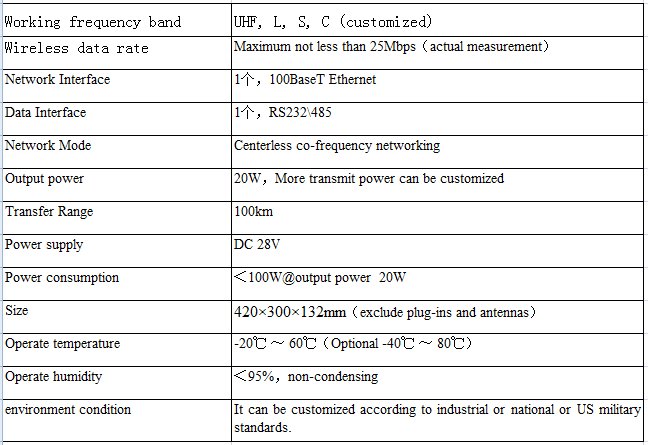Tel: +86-10-84801871-828
Fax: +86-10-84801871-822
email: export@sagetown.com.cn
Add:2nd Floor, Building A, Liangan Gongying Technology Park,Shunsha Road, Changping District, Beijing, China
Beijing Sagetown Technology Co., Ltd
Copyright © Beijing Sagetown Technologies Co., Ltd
Oilfield Wireless Broadband Coverage System

Oilfield Wireless Broadband Coverage System
1 Demand Background
As an important part of pipeline system, station plays a pivotal role in the system. With the continuous development of oil fields and the expansion of oil field station area, compared with the gathering and transportation pipelines outside station, the technology structure of the station pipeline is complex, laying methods are diverse, and the number of facilities and equipment is large. Once the failure occurs, the impact scope is large, which will seriously affect the normal production of oil and gas field enterprises. Therefore, effective risk management and control of station facilities is particularly important.
At present, digital on-line monitoring system composed of sensors and cameras plays an important role in early detection of pipeline and hidden dangers of other equipments, as well as detection of pipeline and equipment hidden dangers in the first time. Therefore, with the expansion of the station area, it is imperative to return all kinds of sensor data and surveillance video to the command center for centralized control and dispatch, and to establish a wireless broadband coverage system for oil field stations.
2 Overall Design of Wireless Broadband Coverage System
As shown in Figure 1, the system structure is divided into three parts: command center (or data center), tower base station, and front end (front end includes well site, mobile vehicle, mobile personnel, UAV).
Fig.1 Framework sketch for wireless broadband coverage system
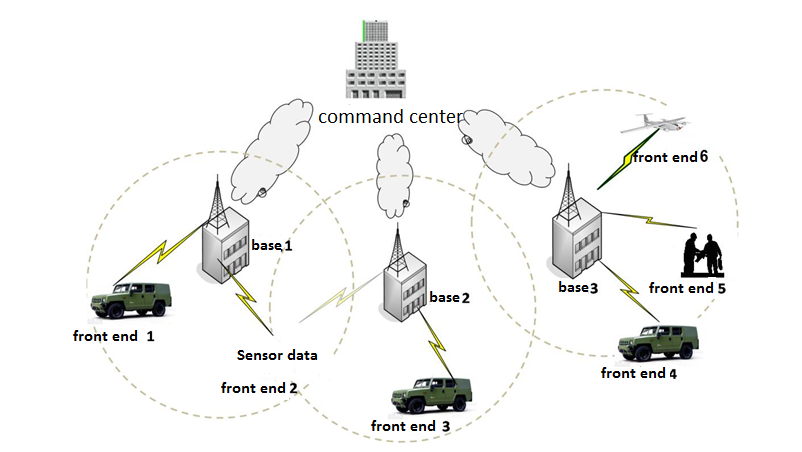
in Oilfield Base station equipment is installed on the iron tower of oil field
(for example, oil field communication tower of oil production plant or iron tower of oil field in order to realize communication coverage construction), and macro cellular coverage with azimuth 360 degree radius of 10-20 km is realized. Several base stations complete wireless coverage of oil field in the form of cellular.
The mobile terminal (vehicle) can roam seamlessly across base stations in the oilfield to realize continuous, broadband and mobile communication in the full coverage area (i.e. the oilfield).
Any fixed monitoring terminal, personnel terminal, vehicle mobile front-end and UAV terminal in the oilfield can be directly connected to the base station equipment in wireless form.
Base station equipment can be connected to the command center network using existing optical fiber networks. If there is no optical fiber network, wireless bridge can be used to connect the tower base station and command center network.
Well site coverage
WiFi coverage is achieved by wireless routing + AP in drilling site (or any other operation site). Various professional conversion equipments on the site connect all kinds of industrial sensors and cameras wirelessly to realize data, video, video conferencing and other applications.
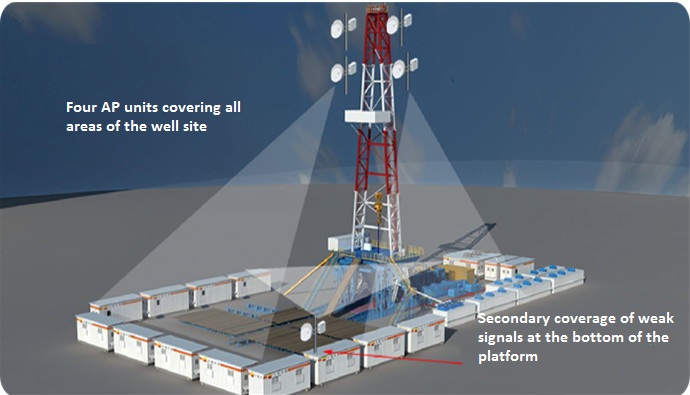
Fig.2. Well site WIFI WiFi coverage
Connection between Well Site and Tower Base Station
The connection between the well site and the tower base station is shown in Figure 3.
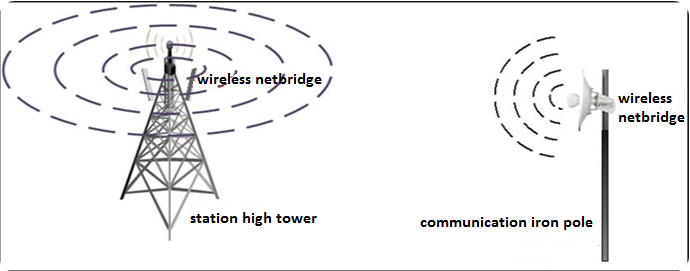
Fig.3. Wireless Connection between Well Site and Tower Base Station
The well site can be connected to the base station by a network bridge with directional antenna mounted on an elevated communication pole.
With the above scheme, vehicles and UAVs traveling in the oilfield can be connected to the Oilfield Network in real time. The data collected by various industrial sensors on the fixed well site can also be connected with the command center in real time. It can run a variety of IP applications to transmit real-time video taken by vehicles and UAVs to the command center or any terminal. Video conference can be held to transmit two-way voice and data.
In cities with 4G coverage, 4G mobile phones, tablet computers, PCs could be used to watch real-time video of oil field wells from other cities online. You can make voice calls with the front end and send control instructions to remote control field equipment.
The construction of wireless broadband system in Oilfield stations is conducive to wireless access, data integration, unified management and dispatch, emergency response of existing digital equipment in oilfield. It improves the level of oilfield informatization construction from production, operation and management, and effectively improves the efficiency of operation and maintenance.
The construction of wireless broadband system in Oilfield stations is conducive to wireless access, data integration, unified management and dispatch, emergency response of the existing digital equipment in oilfield. It improves the level of oilfield informatization construction from production, operation and management, and effectively improves the efficiency of operation and maintenance.
3 System Advantages
1) The system adopts wireless private network communication, which is simple and reliable in construction and maintenance.
2) High bandwidth and smooth communication: advanced modulation technology ensures that there is still enough high bandwidth at long distance;
3) With penetration ability, it can penetrate trees, buildings and hills to achieve non-line-of-sight communication (model-related)
4) No directional antenna is needed, especially suitable vehicles, UAVs and emergency mobile communications (model-related)
5) Single base station covers a wide area , up to 20 km (specific distance is related to model)
6) Seamless roaming of multi-base station network
7) The terminal is easy to access, and the emergency advantages of on-site fault identification and removal, oil theft prevention and control, online expert consultation are obvious.
4 Key Technologies of the System
1) Self-organized technology
The mobile communication mode of "peer-to-peer structure" is constructed by using " self-organized technology". All networking devices in the network can dynamically form a network during the mobile process and exchange information (such as text, voice, image and video) among themselves in many ways. The front-end node, UAV node and command center node of the system coexist in a network, which can carry out multi-point-to-point video transmission. At the same time, the product can satisfy the simultaneous transmission of multi-channel video, and multi-channel transmission depends on the quality of video transmission.
2) COFDM technology
The traditional COFDM technology (multi-carrier orthogonal modulation technology) solves the problems of broadband communication which is easily interfered, multipath interference, frequency selective fading and burst interference. Beijing Sagetown Technology Co., Ltd. has optimized COFDM algorithm, which makes the company's communication equipment based on COFDM technology show excellent performance. In long-distance communication occasions, the coverage distance is farther. In severe multipath situations, such as maritime communications, urban communications, etc., it shows better diffraction ability and "penetration ability". It shows good stability and reliability in high-speed flight and harsh electromagnetic environment (military transport aircraft, helicopter, flying missile).
3) H.264/265 video coding and decoding technology
Efficient video coding and decoding technology can transmit higher quality video with limited bandwidth, while improving the short delay performance of communication equipment. The H.264 coding and decoding technology adopted by our company has a high data compression ratio. Under the same image quality conditions, the compression ratio of H.264 is more than 2 times of that of MPEG-2 and 1.5-2 times of that of MPEG-4, which makes the image transmission quality higher, smoother and better real-time. It is suitable for application scenarios requiring long-distance accurate observation and timely response
5 Equipment Selection
1) Base Station Equipment

Fig.2 Base Station Equipment
Main functions:
Regional coverage is achieved, and a single base station can cover an area with a radius of 20 km;
Each base station supports 3-10 access terminals;
Multiple base stations can cover the whole oilfield area
Optical fiber network can be accessed to establish a wired broadband connection with the command center
Technical Specification:
Working frequency band: UHF, L, S, C (customized before leaving factory)
Wireless data rate: up to 12 Mbps
Networking mode: co-frequency networking
Transmission power: 20W
Coverage Distance: Single Base Station Coverage Radius up to 20km
Number of terminals: Single base station can access 3-10 terminals at the same time
Relay and Roaming: Support
Equipment power supply: AC 220V
Equipment power consumption: <300W
Size: Standard 3U industrial chassis
Equipment weight: about 15kg
Operating temperature: - 20 ~60 ℃
Storage temperature: - 40 ~80 ℃
Environmental humidity: 5%-95%, non-condensation
Three preventive measures: moisture, mildew and salt fog proof
Main interface:
Data Input and Output Interface: RJ45
Antenna Interface: N-type Female Head
Power interface: 220V power socket, with insurance, one
2) Vehicle Portable Terminal
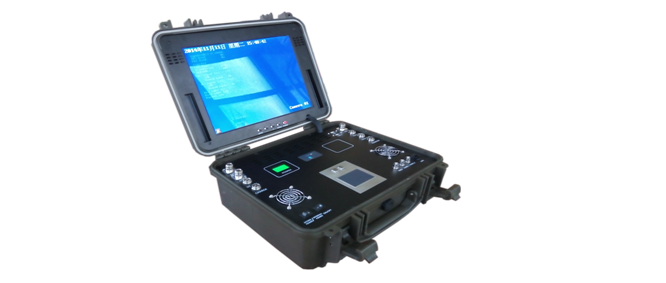
Main functions:
Access to the nearby base station and upload video, voice and data to the base station
Provide network ports to facilitate the access of network cameras and network telephones
Main Technical Specification:
Working frequency band: UHF, L, S, C (customized before leaving factory)
Wireless data rate: up to 12 Mbps
Networking mode: co-frequency networking
Transmission power: 20W
Coverage Distance: Single Base Station Coverage Radius up to 20km
Number of terminals: Single base station can access 3-10 terminals at the same time
Relay and Roaming: Support
Equipment power supply: built-in lithium battery power supply, can guarantee continuous work for 6 hours
Equipment power consumption: <300W
Size: 800mm*500mm*400mm
Equipment weight: about 15kg
Operating temperature: - 20 ~60 ℃
Storage temperature: - 40 ~80 ℃
Environmental humidity: 5%-95%, non-condensation
Three preventive measures: moisture, mildew and salt fog proof
Main interface:
Data Input and Output Interface: RJ45
Antenna Interface: N-type Female Head
Charging interface: 2-core aviation plug
Personnel and UAV terminals

Product Profile:
"Firefly SageSON H5" UAV Self-organized Network Radio is the latest product developed and manufactured by Beijing Sagetown Technology Co., Ltd. specializing in UAV air self-organized network applications. By installing SageSON H-type self-organized network radio, UAV fleet can form a planar network in the air to realize the interconnection between air nodes.
SageSON H5 self-organized Network Radio has a one-way network port (RJ45), which supports air speed up to 15 Mbps. It is used for broadband data sharing between UAVs and can transmit high-quality video.
SageSON H5 self-orgainzed networks have good scalability, flexibility and self-healing. Nodes can join or quit the network at any time without affecting the normal operation of the original network.
SageSON H5 self-orgainzed network radio can transmit power up to 5W. It has the characteristics of small size, light weight and low power consumption. It is suitable for UAV and has excellent communication coverage.
Product Features:
Cofrequency Networking, Single Frequency Point
Peer-to-peer node, no center
Nodes can join and exit freely
Wireless air rate up to 15 Mbps
200ms Self-healing, reconstruction time 200 ms
Stable Communication in High Speed Environment
Main Technical Specification
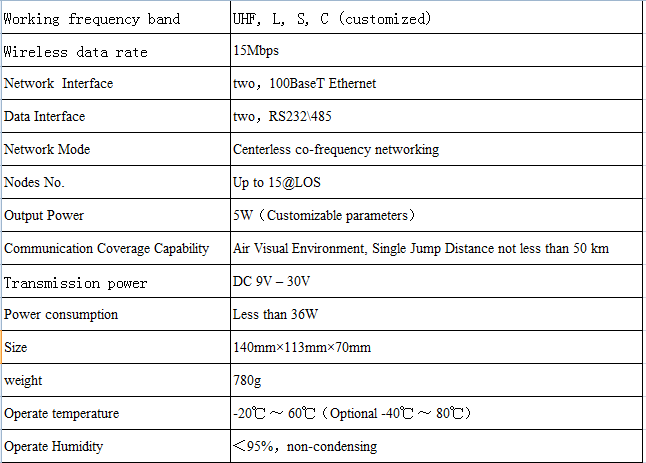
3) Command Center Self-organized Network Radio
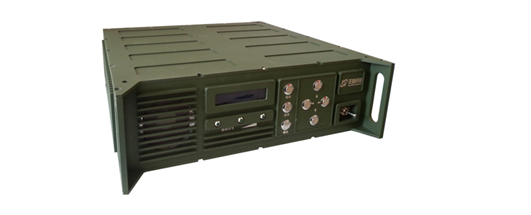
Product Profile:
Sagesight 4000 is a wireless bridge system developed for on-board applications in non-line-of-sight environments. It can transmit bidirectional full-duplex images, voice and data, and can run all network applications as long as the data rate of the application is within the allowable range. The system provides 2*1.7 Mbps to 2*30 Mbps Ethernet bandwidth. It can support computers in high-speed mobile carriers (vehicles, ships, aircraft) to connect directly with the headquarters network.
Raceview 4000 can transmit high-quality video images in high-rise city or sea-level environment with serious multi-path effects (sea clutter). It has excellent ability of "diffraction" and "penetrating" buildings. It can cover a large area without directional antenna, and can work steadily and reliably on various vehicles, ships, aircraft and other sports platforms.
Sagesight 4000 can transmit high-quality video images in high-rise city or sea-level environment with serious multi-path effects (sea clutter). It has excellent ability of "diffraction" and "penetrating" buildings. It can cover a large area without directional antenna, and can work steadily and reliably on various vehicles, ships, aircraft and other sports platforms
The transmission power of Sagesight 4000 can reach more than 20W. It can be directly loaded into 19-inch standard industrial frame to better adapt to the vehicle environment
Products features:
Transmission of multimedia data, such as high-definition images, stereo voice (left and right channels);
Support full duplex two-way voice;
Supporting bidirectional video conferencing between mobile and fixed station or another mobile station;
Supporting the networking of computers and headquarters in high-speed mobile under non-line-of-sight conditions;
High-quality real-time image transmission is realized in high-speed motion, and the moving speed is over 300 kilometers per hour.
Encryption transmission; Encryption algorithm: AES, 128-bit key;
Working frequency band: UHF, L, S, C (200MHz-9000MHz, customized before leaving the factory);
Operating Frequency Point: Operating cabinet panel can change the frequency point according to the key, switching between the preset 8 channels in turn; By changing the frequency point, local interference can be avoided;
Operating cabinet panel can change transmitting power by pressing the key, changing the range from 700 mW to 20W, high receiving sensitivity, up to - 103dBm (10-6 BER@2.5MHz channel width);
It can bypass buildings and work normally in high-rise cities.
It can resist multipath interference and work normally on the sea surface. It can be used for ship-to-ship, ship-to-shore and ship-to-aircraft transmission
Technology Specification:
